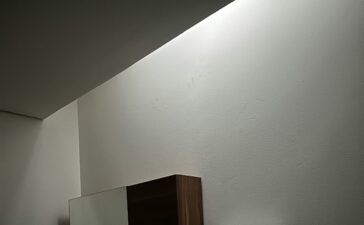Sky watchers can observe magnified images of celestial objects with telescopes. However, it’s crucial to be well-informed before visiting the stores so you’ll make the best decision whether you’re purchasing your first, second, or fifth telescope.
You should do your homework, become conversant in the jargon, and give some thought to your needs because a telescope is a long-term investment. As an example, are you more curious about deep-sky objects or planets when using a telescope? Your choice of telescope will be influenced by these goals.

Power alone doesn’t make a decent telescope. Although a magnification of 300 times sounds fantastic, there’s a drawback: while high magnification makes an item appear larger, the sunshine gathered by the scope is dispersed over a broader area, creating a fainter image within the eyepiece. When observing objects that are dispersed over the sky, such clusters or nebulae, lesser magnification power might occasionally offer a far better viewing experience.
Any new telescope should have a minimum of one eyepiece, and a few sets come with two or three. A millimeter scale is used to rate eyepieces, with lower numbers signifying higher magnification. A 25-millimeter eyepiece is common and appropriate for many beginners. A bit like magnification power, a high-power eyepiece doesn’t necessarily mean better viewing. For instance, it’s going to allow you to see details in a small cluster, but if it’s won’t to look at a nebula, it’ll only show a part of the object. There are differing types of telescope for sale but you can select the best one for you.
It’s also important to recollect that while a higher-magnification eyepiece may provide more details, it is often harder to keep an object in view. To urge the steadiest seeing in such cases, you’ll need to use a motorized mount.
Refractors and reflectors are the 2 most popular types of amateur telescopes. There are two lenses during a refractor telescope. The observer’s seeing lens, also referred to as the ocular or eyepiece is at one end and therefore the larger of the two, referred to as the objective, and is at the opposite. The most concave mirror, which is found at the bottom of a reflector telescope, collects light there. The first can focus the light in a variety of ways, and therefore the way it is done determines the kind of reflecting scope.

A mount for a telescope may be a platform that keeps it steady. Although it can appear to be an additional accessory, it’s just as crucial as the tube and optics. A high-quality telescope mount is a superb investment because it is very difficult, if not impossible, to look at a distant object if the scope wobbles even slightly.
Altazimuth and equatorial mounts are the 2 main categories. Altazimuth is like a tripod for a camera. It enables the telescope to maneuver back and forth as well as up and down. Equatorial mounts are more intricate since they’re made to track the motion of celestial objects. High-end equatorials use a motor drive that rotates with the world to keep a target in the field.
How to Choose Your First Telescope
It’s a clear night. You step outside and look up at the stars, and suddenly you feel the urge to learn more about these distant points of light. So, you want to buy a telescope. But with all the different types and models out there, how do you choose the right one for you? In this blog post, we will explore how to choose your first telescope. We will cover the different types of telescopes, what to look for in a good model, and how to find the best deal. By the end of this post, you will be armed with the knowledge you need to make an informed decision about your purchase.
Why Get a Telescope?
There are many reasons to get a telescope. Perhaps you’ve always been interested in the stars and want to get a closer look at them. Or maybe you want to see the craters on the Moon or the rings of Saturn. Whatever your reason, a telescope can give you an up-close view of some amazing astronomical objects.
Telescopes come in all shapes and sizes, so it’s important to choose one that’s right for you. In general, the larger the telescope, the more detail you’ll be able to see. But keep in mind that bigger isn’t always better – a large telescope can be difficult to set up and use, especially if you’re a beginner. You may also want to consider getting a computerized telescope, which can help you find things to look at in the night sky.
If you’re not sure where to start, check out our article on how to choose your first telescope. And remember, even if you don’t have the perfect setup, there’s still a lot of fun (and science!) to be had just by looking up at the stars on a clear night.
How to Choose a Telescope
There are a few things to consider when choosing a telescope. First, think about what you want to see with your telescope. If you’re interested in viewing planets and stars, you’ll need a different type of telescope than if you’re interested in looking at galaxies or nebulae. Second, consider the size and weight of the telescope. If you plan on doing a lot of traveling, you’ll want a smaller, more portable telescope. Third, decide how much money you’re willing to spend on a telescope. There are many high-quality telescopes available for purchase, but they can be expensive. fourth, make sure to do your research before purchasing a telescope. There are many different types and brands of telescopes available, so it’s important to read reviews and compare products before making your final decision.
The Different Types of Telescopes
There are three main types of telescopes: refracting, reflecting and catadioptric.
Refracting telescopes use a lens to bend and focus light. They are usually small, portable and easy to use, making them a good choice for beginners. However, they can be expensive and the quality of the image can be affected by atmospheric conditions.
Reflecting telescopes use mirrors to collect and focus light. They are usually larger than refracting telescopes, but they are often more affordable. Reflecting telescopes can be difficult to set up and align, so they may not be the best choice for beginners.
Catadioptric telescopes combine lenses and mirrors to collect and focus light. They are often compact and easy to use, making them a good choice for beginners. However, they can be more expensive than other types of telescopes.
Pros and Cons of Different Telescope Types
There are three main types of telescopes: refractors, reflectors, and catadioptric. Each has its own set of pros and cons that you should consider before making your purchase.
Refractor telescopes use a lens to gather light and form an image. They are typically compact and portable, making them a good choice for beginners. However, they can be more expensive than other types of telescopes, and the quality of the images they produce can be affected by atmospheric conditions.
Reflector telescopes use mirrors to gather light and form an image. They are usually less expensive than refractors, but they require more maintenance because the mirrors need to be kept clean. Reflectors also tend to be larger and heavier than refractors, making them less portable.
Catadioptric telescopes use a combination of lenses and mirrors to gather light and form an image. They are often more expensive than other types of telescopes, but they offer the best image quality. Catadioptric telescopes are also very compact, making them a good choice for beginners who want a telescope that is easy to transport.
What to Look for When Buying a Telescope
When you are ready to buy your first telescope, there are a few things you should keep in mind. First, consider what you want to use the telescope for. If you are interested in astrophotography, then you will need a telescope with a motorized mount. If you just want to view the night sky, then a simple refractor telescope will suffice.
Next, consider your budget. telescopes can range in price from a few hundred dollars to several thousand dollars. Decide how much you are willing to spend on your new hobby before you start shopping.
Finally, think about where you will be using the telescope. If you live in an urban area, light pollution will limit your views of the night sky. In this case, you might want to consider buying a portable telescope that can be taken outside of the city for better viewing.





